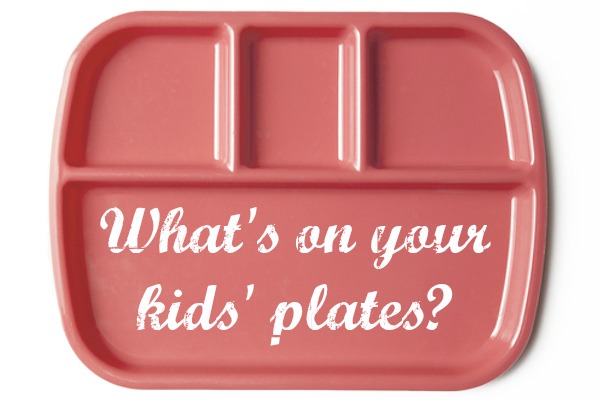 A picture is worth a thousand words. And the folks at sweetgreen (more on them later) know it. They posted pics of school lunches around the world, and I have to say: “Message received.” I’m so intrigued by this.
A picture is worth a thousand words. And the folks at sweetgreen (more on them later) know it. They posted pics of school lunches around the world, and I have to say: “Message received.” I’m so intrigued by this.
How do our school lunches compare with those in other countries?
The school lunches I recall were made up of unhealthy foods I loved to eat — fish sticks, chicken nuggets, mac and cheese, burgers, fries. And while we’ve made efforts to improve school lunch nutrition in this country, could we take a bit of inspiration from other countries’ school lunches?
Food for thought…
School Lunches Around the World
Here’s a school lunch in Italy — local fish on a bed of arugula, pasta with tomato sauce, caprese salad, baguette, and some grapes. Seriously. Local fish.
How about a cafeteria lunch in Finland? Pea soup, beet salad, carrot salad, bread, and pannakkau (a dessert pancake) with fresh berries. Fresh berries? Wow.
And then there’s the student meal in France. Steak, carrots, green beans, cheese, and fresh fruit. Très magnifique!
What are students eating in Brazil? Pork with mixed veggies, black beans and rice, salad, bread, and baked plantains. Sounds delicious, right?
And in South Korea — fish soup, tofu over rice, kimchi, and fresh veggies. I’m not sure this would fly in America, but you never know.
In Greece, they’re eating baked chicken over orzo, stuffed grape leaves, tomato and cucumber salad, fresh oranges, and greek yogurt with pomegranate seeds. Yum.
In Ukraine, they’re dining on mashed potatoes with sausage, borscht, cabbage, and syrniki (a dessert pancake).
And in Spain — sautéed shrimp over brown rice and vegetables, gazpacho, fresh peppers, bread, and an orange. ¡Gracias!
How does the typical American school lunch compare? Take a look.
Yes, there’s some green on the plate. Other than that, it looks a lot like the school lunches of my childhood. Frozen food. High fructose corn syrup. Lots of sugar. Lots of sodium.
Can’t We Do More?
Nearly 100,000 schools and institutions serve school lunches to 30.3 million students each day, adding up to 5 billion lunches served each year. Most of these students consume more than half of their daily calories at school.
Meanwhile, we’re dealing with a serious childhood obesity issue: The percentage of children aged 6 to 11 years in the United States who were obese increased from 7% in 1980 to nearly 18% in 2012, according to the Centers for Disease Control and Prevention.
We’re an innovative, affluent country, filled with ideas, energy, and great resources. And as a country, we’re looking for ways to flip the script on school lunch nutrition, but how far have we really come? These pictures make me wonder.
About sweetgreen
Who is sweetgreen? This is a really cool company. Here’s their story:
Founded in 2007, sweetgreen is a destination for delicious food thats both healthy for you and aligned with your values. We source local and organic ingredients from farmers we know and partners we trust, supporting our communities and creating meaningful relationships with those around us. We exist to create experiences where passion and purpose come together.
The company values sustainability, community, and making an impact. Its blog is named Passion x Purpose. It has developed a program — sweetgreen in schools — to educate kids on healthy eating, fitness, and sustainability. And it has a powerful, inspirational manifesto that speaks to me.
There are sweetgreen restaurants in the following states: DC, Massachusetts, Maryland, New York, Pennsylvania, and Virginia. And they’re coming soon to California.
When they come to Dallas, I’ll be first in line.
Do these pictures surprise you? Does the US lunch bring back memories for you as it does for me?
Image Credits: School Lunches via sweetgreen — used with permission
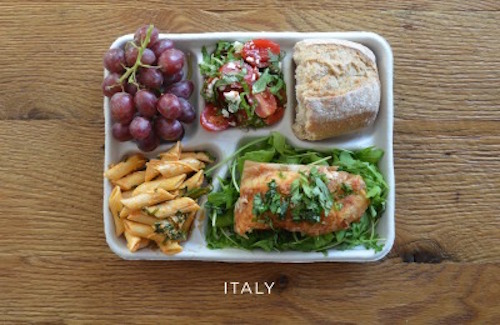
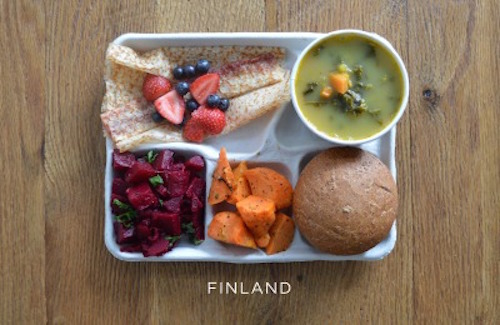

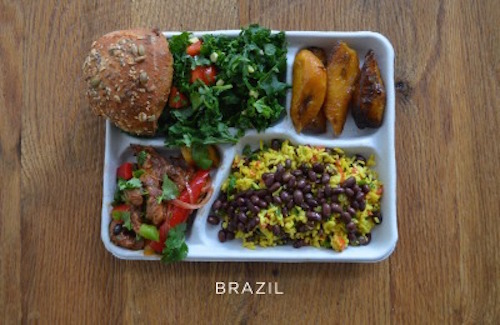
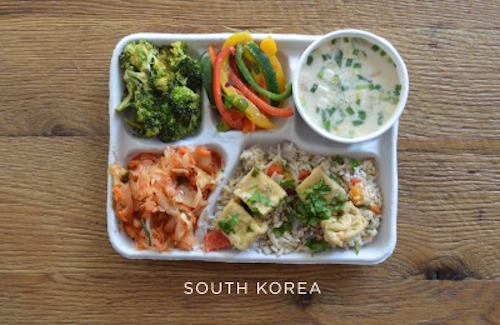
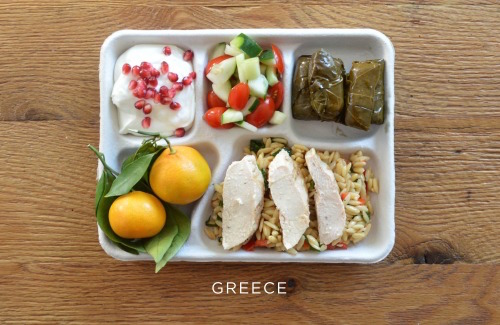

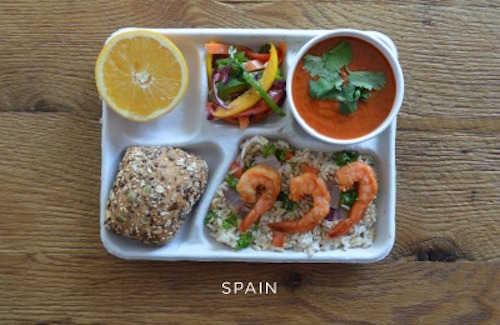


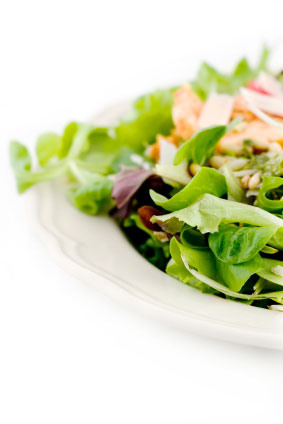
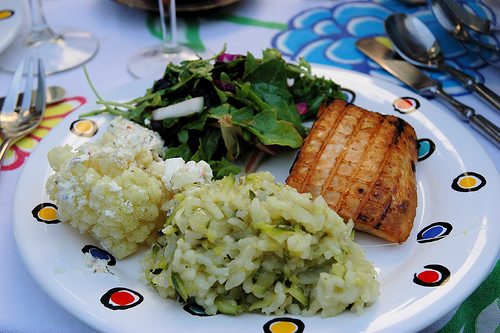


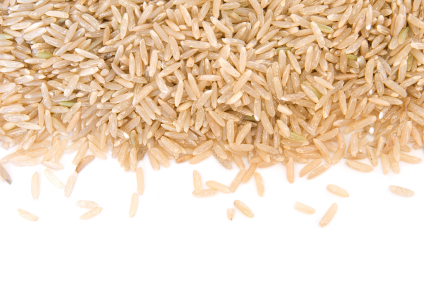

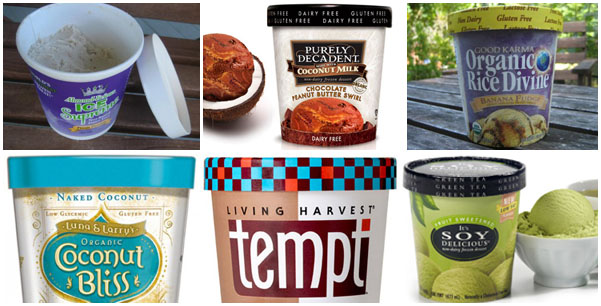
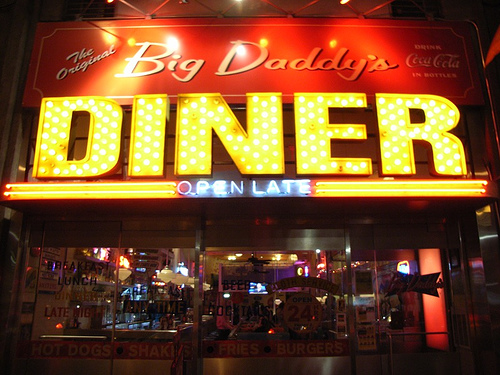
Our children need to eat healthier in school
I am a Family and Consume Science teacher and I teach healthy eating/living in my classroom everyday. Additionally, one of my responsibilities is to monitor the the cafeteria daily. I do have the luxury of seeing the cafeteria menu everyday. I do feel that schools across the country are really trying to improve the food that is served in the cafeteria. Michelle Obama has instituted numerous food restrictions and regulations in regards to serving food in US schools. Our school in particular serves only whole grain noodles, cut up fresh fruit daily, and provides a variety of fresh fruits and vegetables daily. I do agree that the schools should continue to improve on the food that is served to the children in the US however, I do not necessarily feel as though Mrs. Gerush realizes how much the food menu and foods that are being served have changed. Schools are making strides in improving the food served! They are required to. It is now federal mandate for schools to make many changes to the food being served, the amount of calories provided in a meal, and even the snacks that are offered in addition to the meal.
I had a long discussion with the school’s food service coordinator and she began collecting data on how much food was being wasted when the school started instituting regulations on the food being served, such has whole grain noodles, and requiring a student to HAVE to take a fruit and a vegetable or a milk. She had the garbage weighed daily for a year to see how much food was being thrown away. The numerous were astronomical. There was a clear increase in the amount of wasted food. I watch in the cafeteria as whole unopened milks, apples, carrot sticks, ect. are thrown away. It really is a shame but the reality is we can required the students to take the healthy foods but we can not make them eat it!
Thank you so much for this thoughtful comment. I think that Mary’s point is that we’ve made changes, but many schools still have a long way to go. It’s great to hear from someone on the front lines – this is fascinating!
Thank you for your feedback! I do know there have been significant strides in improving school lunches – you guys are doing amazing work. I wonder if I can find pictures of American school lunches over time… Will definitely look. And it’s so interesting to learn about your food waste analysis. That would make a great story! Thanks again.